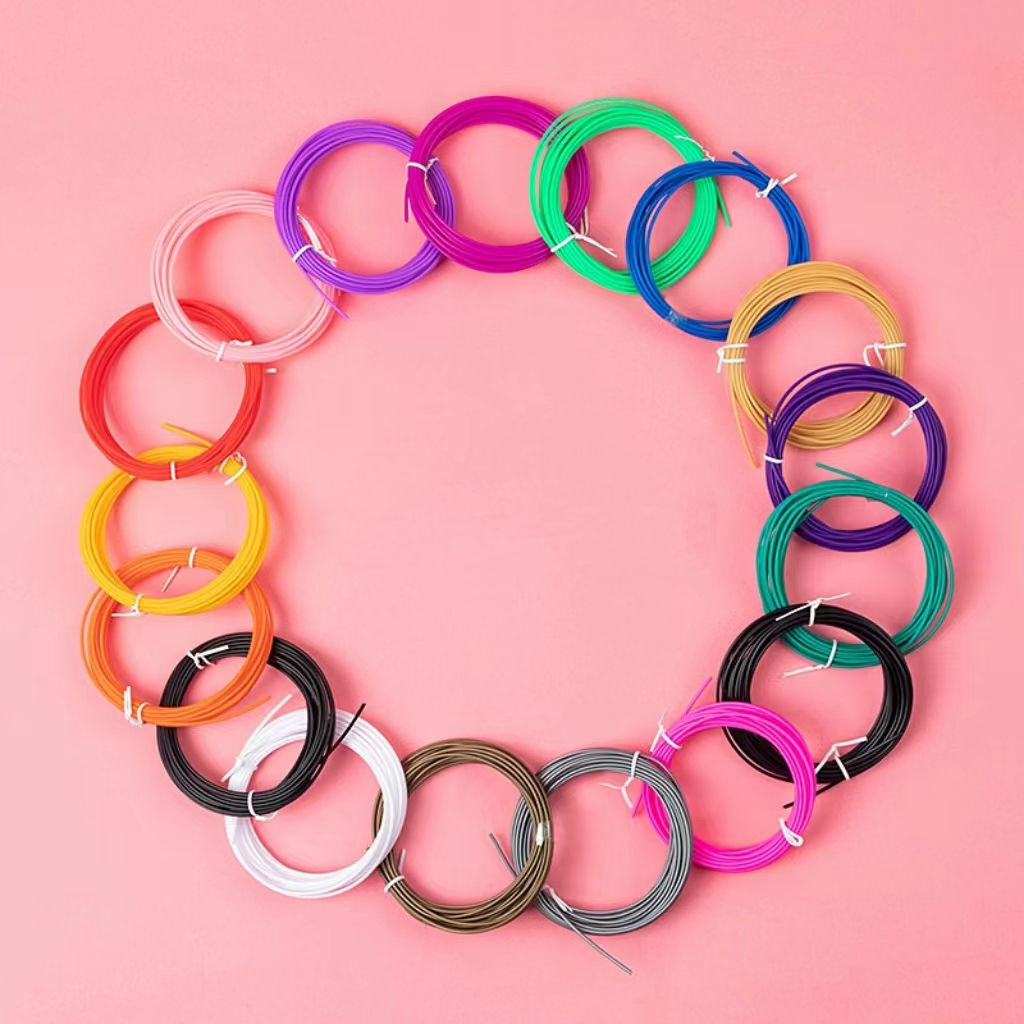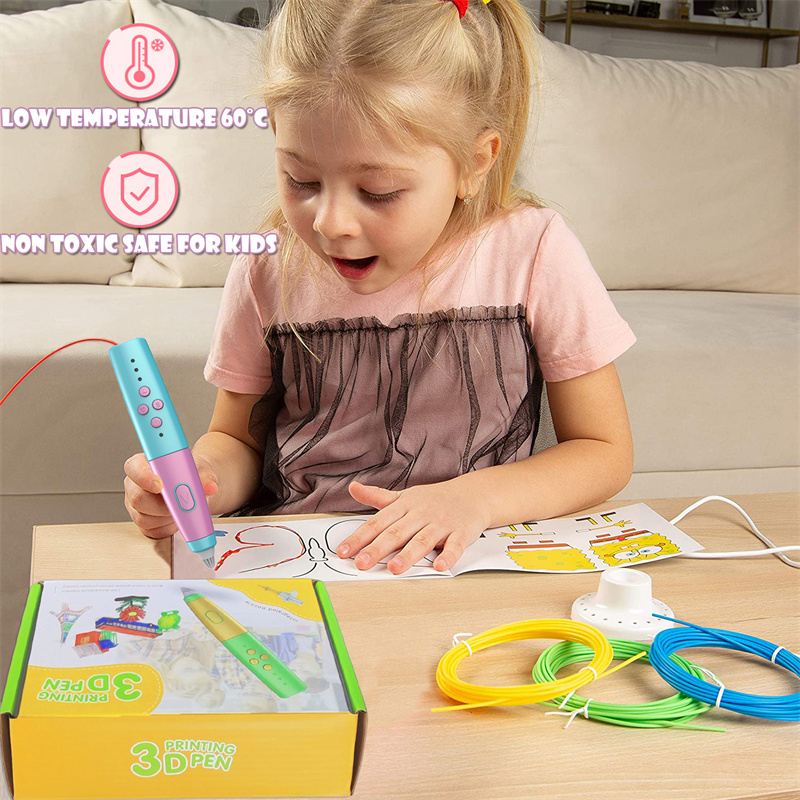How to Use 3D Pen? A Beginner's Guide
Dec 12,2023 | 3D4Create
3D pens are innovative tools that allow you to draw stunning 3D objects right from your imagination. But like any new technology, they come with a learning curve.
If you’re eager to try your hand at 3D pen art but don’t know where to begin, this comprehensive guide is for you! We’ll walk through choosing the right 3D pen, mastering basic techniques, troubleshooting issues, safety tips, and more.
I. Picking the Right 3D Pen
With different brands and models available, deciding on your first 3D pen can be tricky. Here’s what to look for in a quality beginner’s pen:
1. Features to Look For
- Adjustable temperature for fine control
- Comfortable, ergonomic grip design
- Intuitive controls and settings
- Strong customer reviews
2. Recommended Starter Models
These top-rated pens balance performance, ease of use, and affordability. Look for sales on starter bundles with handy accessories.

3. Filament Considerations
- PCL vs PLA vs ABS – PCL is better for new users. It has a lower melting temp and no odor.
- Diameter – 1.75mm filament is standard for most consumer pens.
Focus on a quality pen with good filament compatibility. Extras can come later!

II. Getting Set Up with Your 3D Pen
Once you’ve selected your pen, get ready to start drawing:
1. Charging 3D Pens
For a wireless model, fully charge the battery as directed before first use. This prevents interruptions while drawing. For a corded model, use a USB to connect your 3D pen and start creation.
2. Loading Filament
Carefully feed the filament into the pen’s chamber according to its instructions. Apply light pressure – forcing can jam the gears.
3. Adjusting Temperature
Set the pen’s temp control to the filament’s recommended range. Start low until you get a feel for proper melting.

14+ Years Old 3D Pen with PLA Filament
III. Learning the Basics of 3D Drawing
Drawing successfully with a 3D pen involves developing core skills:
1. Proper Hand Positioning
Hold the pen like you would a regular pen or paintbrush for optimal comfort and control. Avoid “death grip” – it restricts fluid strokes.
2. Controlling Speed and Flow
Move the pen slowly and steadily. Let gravity do the work as filament flows naturally. Fast movements result in messy blobs.
3. Drawing Lines and Shapes
Practice guiding the pen to draw straight lines, circles, squares, triangles. Mastering 2D shapes builds essential muscle memory.
VI. Troubleshooting Common Issues of 3D Pens
Don’t get frustrated if your first attempts aren’t perfect. Common problems and solutions include:
1. Clogs and Jams
Carefully remove filament and clean the nozzle with included tools. Slow, even pressure when reloading prevents future jams.
2. Stringing or Oozing
Lower the temperature and slow down drawing speed. Drawing too fast can cause excess dripping.
3. Uneven Flow
Adjust the temperature to find the ideal filament melting point. Higher may increase flow, lower reduces it.
V. Tips to Improve Your Skills for 3D Pens
With time and technique refinement, your 3D pen proficiency will skyrocket:
1. Take Breaks to Avoid Strain
Periodic short breaks prevent hand cramps. Frequent mini breaks are better than long intervals.
2. Let Layers Cool Properly
Rushing between layers leads to structural instability. Take it slow and let each layer harden before adding more.
3. Practice Basic Shapes First
It’s easy to get ahead of yourself starting out. Master basic lines and geometric shapes before attempting complex models.

Basic triangular shape created by 3D pens
VI. Safety Best Practices with 3D Pens
While fun, 3D pens pose risks like any powered tool used improperly:
1. Supervise Kids Carefully
Children under 8 should only use 3D pens with adult guidance to prevent accidents.
2. Avoid Nozzle Contact After Heating/Use
If you are using PLA and ABS 3D pen, the hot nozzle can burn skin. Allow the pen to fully cool before handling.
PCL 3D pens generally operate at around 60℃, so there is less risk of burns.
3. Store Properly When Not in Use
Turn off the power and keep pens in secure locations out of reach of unsupervised children.
With reasonable precautions, 3D pens are safe creative tools. Follow all guidelines and happy drawing!

VII. Conclusion
It takes practice to master the basics, but learning how to use a 3D pen opens up a world of incredible possibilities. With an understanding of how to choose a quality pen, troubleshoot issues, and safely practice fundamental techniques, you’ll be creating complex 3D models and artistic wonders in no time!
FAQS:
1. How do you use a 3D pen for the first time?
Read the instructions to load filament properly and set the ideal temp. Hold it like a regular pen and practice basic shapes slowly. Let layers cool before adding more. Take breaks to avoid hand strain.
2. Can a 12 year old use a 3D pen?
Yes, a 12 year old can safely use a 3D pen. Ensure the pen's temperature won't burn skin. Guide their hand at first to teach good technique. Select a kids model with safety features.
3. Is using a 3D pen easy?
3D pens do require some learning to master speed, flow, positioning, and layering. Take time to practice fundamentals and watch tutorial videos. As skills improve, using a 3D pen becomes quite enjoyable and rewarding.
4. What is the easiest 3D pen to use for beginners?
Quality starter pens like the Intelligent Low-Temp Wireless 3D Printing Pen, Juice Color 3D Doodler Pen and Little Tiger PCL 3D Pen are very beginner-friendly. Look for adjustable temperature, comfortable grip, and intuitive controls.
See Also:
PCL vs PLA 3D Pens: A Comparative Guide to Getting the Right 3D Pen
8 Cool 3D Pen Templates for Animals
What Can I Do With a 3D Pen? 10 Cool 3D Pen Ideas


